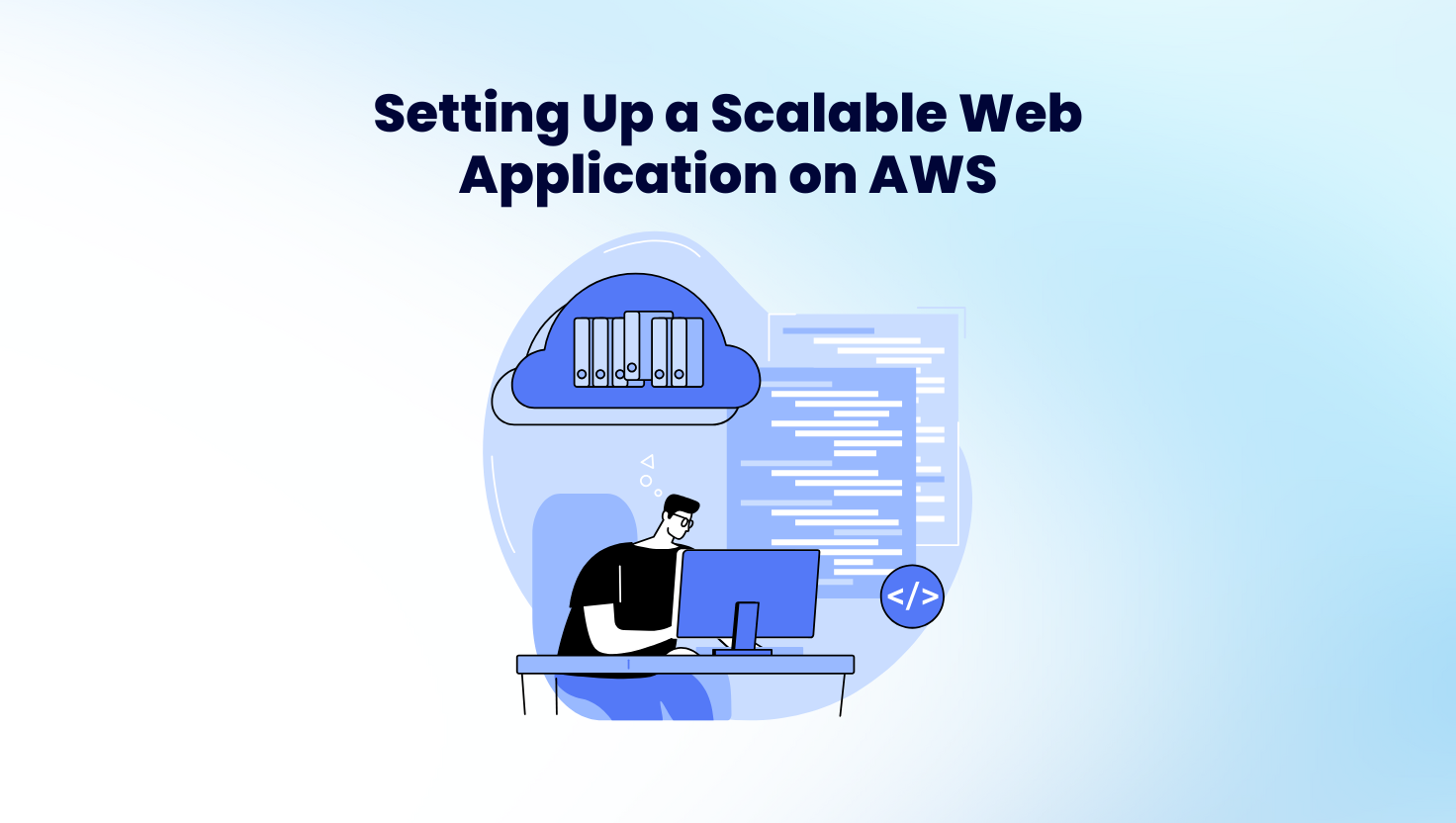
26 Feb How to Set Up a Scalable Web Application on AWS
Scalability is one of the most crucial aspects of modern web applications. As businesses grow, their applications must handle increasing traffic loads efficiently. Amazon Web Services (AWS) provides powerful cloud-based solutions to build scalable web applications that can adapt to varying user demands.
This guide covers the key steps in setting up a scalable web application on AWS, ensuring reliability, performance, and cost efficiency.
Why Choose AWS for a Scalable Web Application?
AWS offers a broad set of cloud services that allow businesses to build scalable, secure, and highly available web applications. Some key benefits of AWS for scalability include:
- Elasticity: AWS services like EC2 Auto Scaling and AWS Lambda ensure applications adjust dynamically to changing traffic demands.
- Reliability: AWS offers multiple availability zones and redundancy features to minimize downtime.
- Security: AWS provides strong security measures, including Identity and Access Management (IAM), Virtual Private Cloud (VPC), and encryption.
- Cost Efficiency: AWS’s pay-as-you-go model helps businesses optimize costs based on actual resource usage.
Step-by-Step Guide to Setting Up a Scalable Web Application on AWS
1. Choose the Right Architecture
Before setting up a scalable application, you need to decide on an architecture that fits your business requirements. AWS supports multiple architectures, including:
- Monolithic Architecture: A single application structure, best suited for small-scale applications.
- Microservices Architecture: Breaks the application into independent services, ideal for scalability and flexibility.
- Serverless Architecture: Uses AWS Lambda to handle requests dynamically without managing servers.
For most modern applications, microservices and serverless architectures provide the best scalability options.
2. Set Up Your Compute Infrastructure
AWS provides various compute options to host your application:
Amazon EC2 (Elastic Compute Cloud)
- Choose an EC2 instance type based on expected traffic (e.g., t3.micro for small apps, c5.large for compute-intensive apps).
- Enable Auto Scaling Groups to automatically adjust the number of instances based on demand.
- Deploy applications behind an Elastic Load Balancer (ELB) to distribute traffic efficiently.
AWS Lambda (Serverless Option)
- Ideal for event-driven applications that do not require dedicated servers.
- Supports dynamic scaling, meaning AWS automatically adjusts computing resources as needed.
3. Configure Your Database
Scalable applications need a database that can handle increasing data loads. AWS offers multiple database solutions:
Amazon RDS (Relational Database Service)
- Choose from MySQL, PostgreSQL, SQL Server, and others.
- Enable Read Replicas to distribute read traffic and improve performance.
- Enable Multi-AZ Deployment for high availability.
Amazon DynamoDB (NoSQL Database)
- Fully managed NoSQL database with auto-scaling capabilities.
- Ideal for applications with unpredictable traffic and high-speed queries.
Amazon Aurora
- A high-performance managed database with automatic scaling and replication.
- Provides up to 15 read replicas to distribute database workload.
4. Implement Load Balancing
Load balancing is essential to ensure your application remains responsive under heavy traffic.
Elastic Load Balancer (ELB)
- Distributes traffic across multiple EC2 instances to improve availability and fault tolerance.
- Supports Application Load Balancer (ALB) for intelligent routing based on request types.
Using ELB with Auto Scaling Groups ensures that new instances are automatically added or removed based on demand.
5. Enable Caching for Faster Performance
Caching helps reduce the load on your database and speeds up content delivery.
Amazon CloudFront (Content Delivery Network – CDN)
- Delivers static and dynamic content to users from the nearest AWS edge location.
- Reduces latency and improves load times.
Amazon ElastiCache
- Provides Redis or Memcached for in-memory caching.
- Reduces database queries by storing frequently accessed data in memory.
6. Secure Your Application
Security is crucial for protecting your web application from cyber threats. AWS provides multiple security features:
- AWS IAM (Identity and Access Management): Controls access to AWS resources.
- AWS WAF (Web Application Firewall): Protects against SQL injection and other threats.
- AWS Shield: Provides DDoS protection.
- Encryption: Use AWS Key Management Service (KMS) for encrypting sensitive data.
Using VPC (Virtual Private Cloud) ensures that your database and backend services are isolated from the public internet.
7. Automate Deployment and Monitoring
Automation reduces manual effort and ensures continuous monitoring of application health.
AWS CodePipeline & CodeDeploy
- Automates CI/CD workflows for seamless code deployment.
- Ensures zero-downtime deployment using Blue/Green Deployment strategy.
Amazon CloudWatch
- Monitors system performance, application logs, and real-time metrics.
- Sends alerts in case of errors or spikes in resource usage.
Using AWS CloudFormation helps automate infrastructure provisioning with infrastructure-as-code templates.
Scaling Strategies for AWS Web Applications
Vertical Scaling vs. Horizontal Scaling
- Vertical Scaling (Scaling Up) – Increasing instance size (CPU, RAM). Limited by hardware constraints.
- Horizontal Scaling (Scaling Out) – Adding more instances to handle increased traffic. Preferred for scalability.
AWS Auto Scaling and Load Balancers enable seamless horizontal scaling based on demand.
Serverless Scaling with AWS Lambda
- AWS Lambda automatically scales up or down without managing servers.
- Supports pay-per-execution, reducing unnecessary costs.
Cost Optimization Tips for Scalable AWS Applications
Managing cloud costs is essential when scaling applications. Follow these strategies to optimize costs:
- Use Auto Scaling Groups to avoid over-provisioning.
- Leverage Spot Instances for cost savings on non-critical workloads.
- Use AWS Cost Explorer to monitor and optimize expenses.
- Enable Reserved Instances for long-term cost savings.
How PT. KDN Can Help You Build a Scalable AWS Web Application
Building and maintaining a scalable web application requires expertise in cloud architecture, security, and cost management. PT. KDN provides AWS cloud consulting and development services to help businesses optimize their cloud infrastructure.
Our AWS Services Include:
- Scalable Architecture Design – Custom AWS solutions tailored to your business.
- Auto Scaling & Load Balancing Implementation – Ensuring seamless traffic management.
- Database Optimization – Setting up high-performance databases.
- Security & Compliance – Implementing AWS security best practices.
- CI/CD Automation – Automating deployments for continuous integration.


Sorry, the comment form is closed at this time.